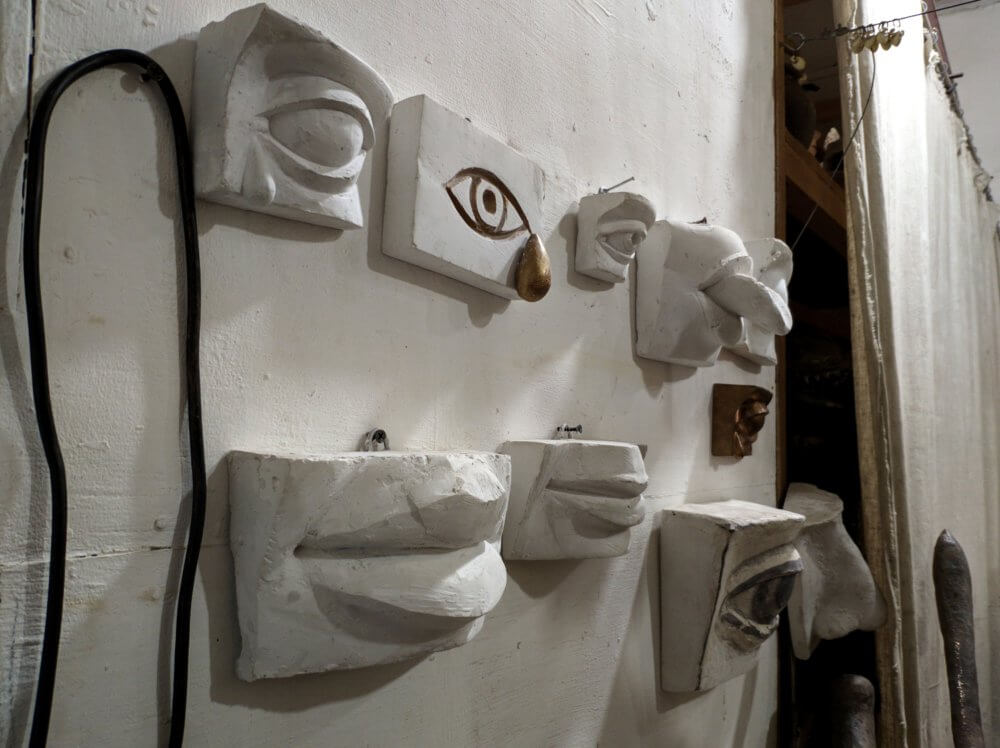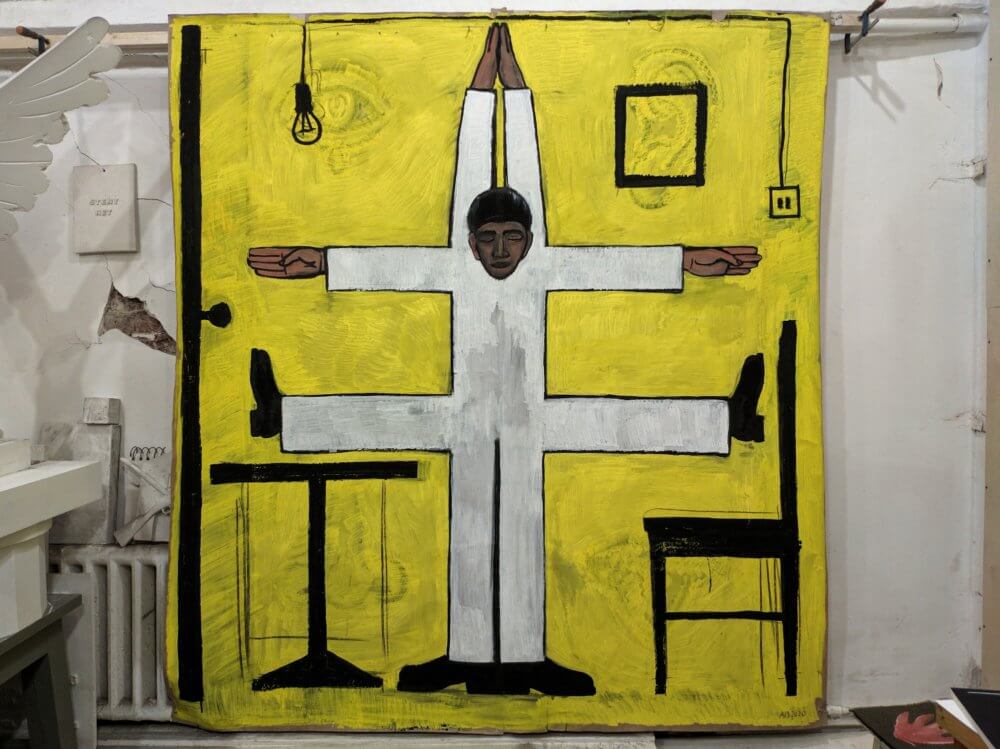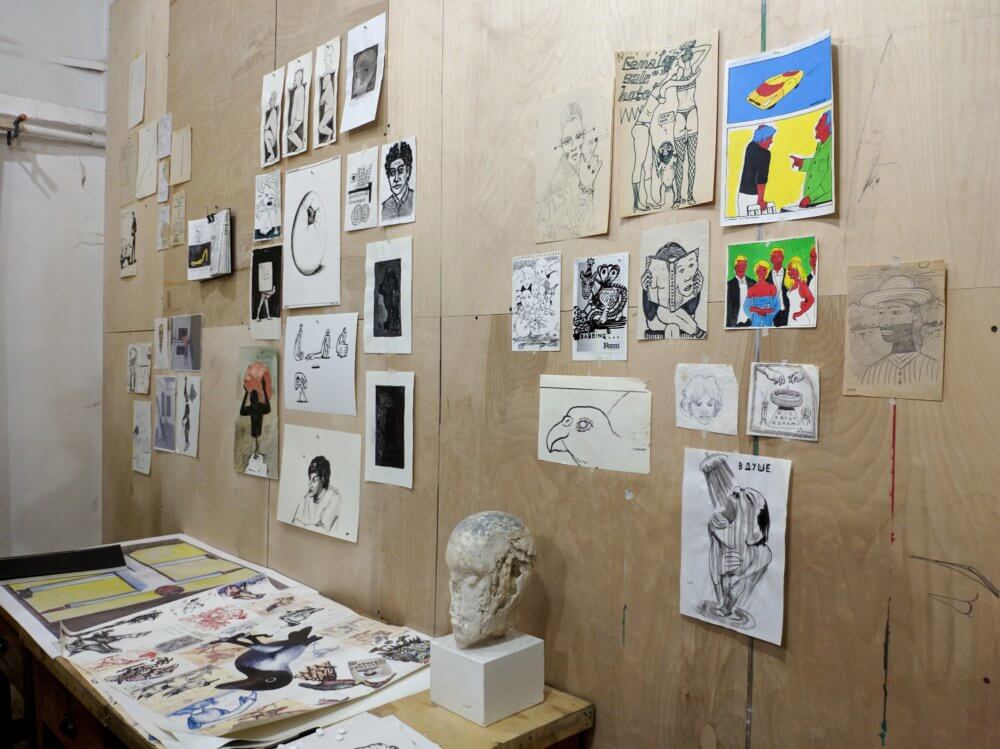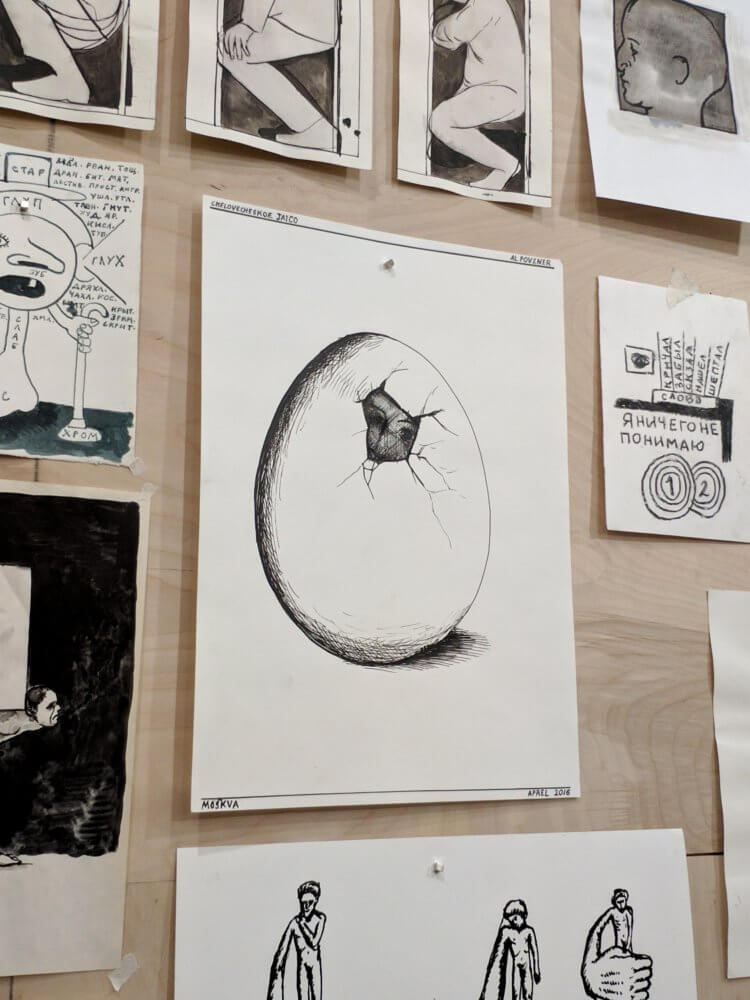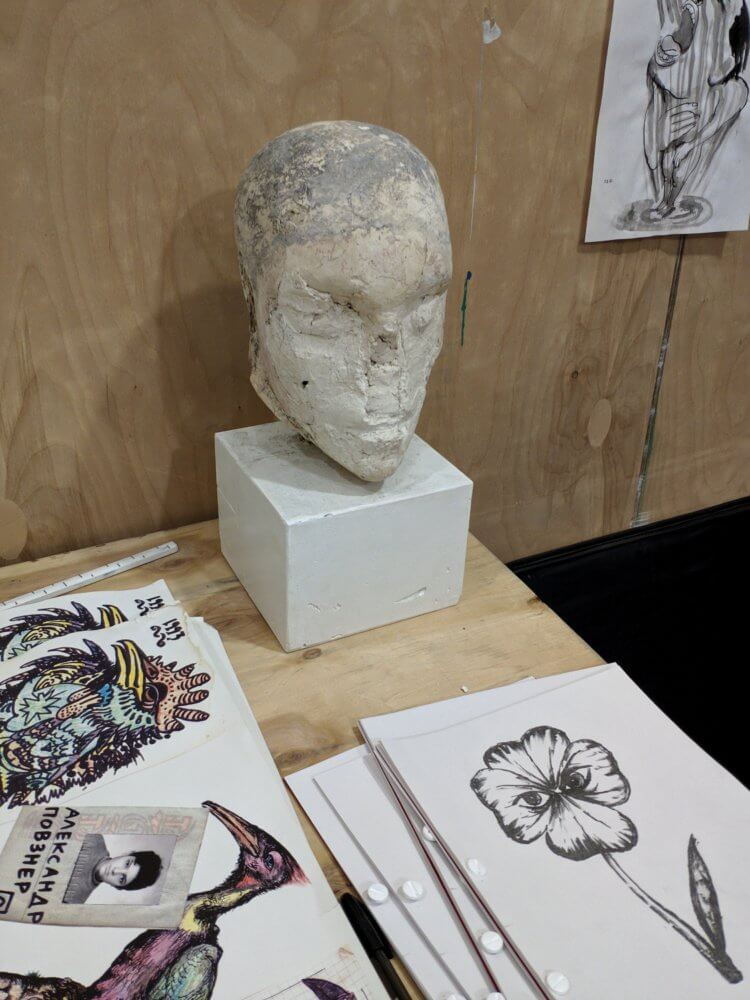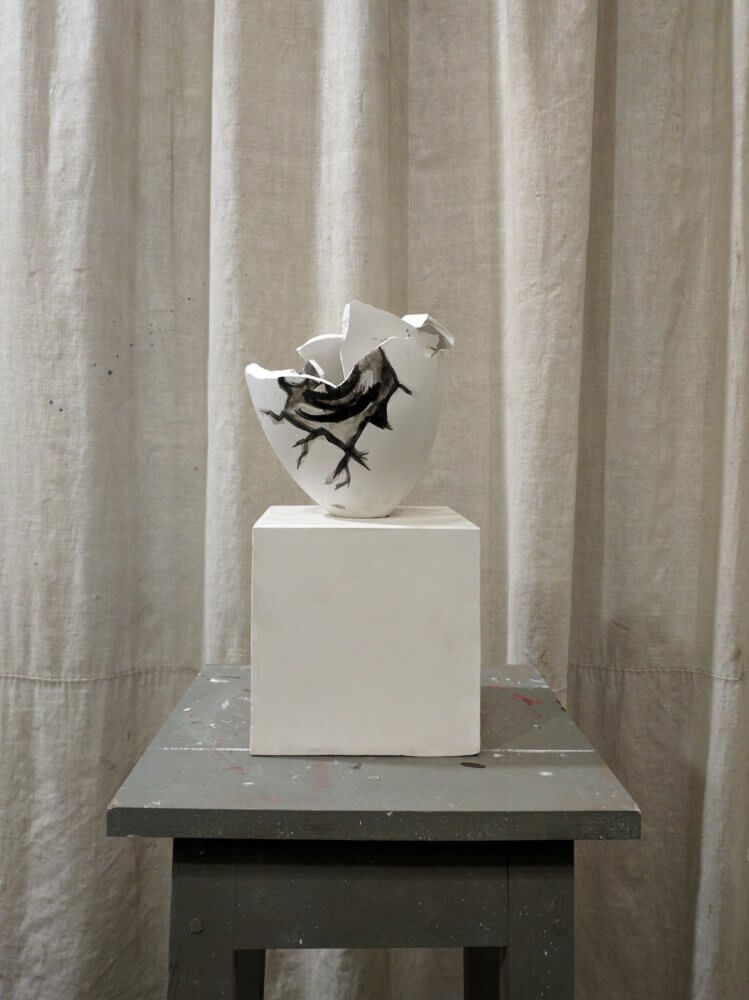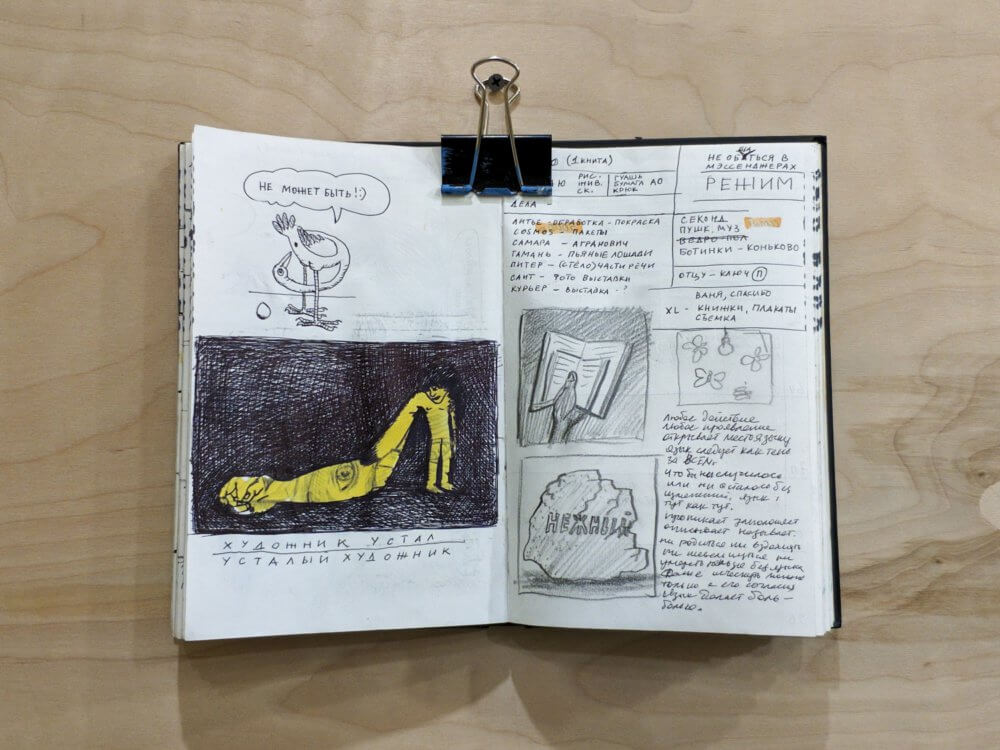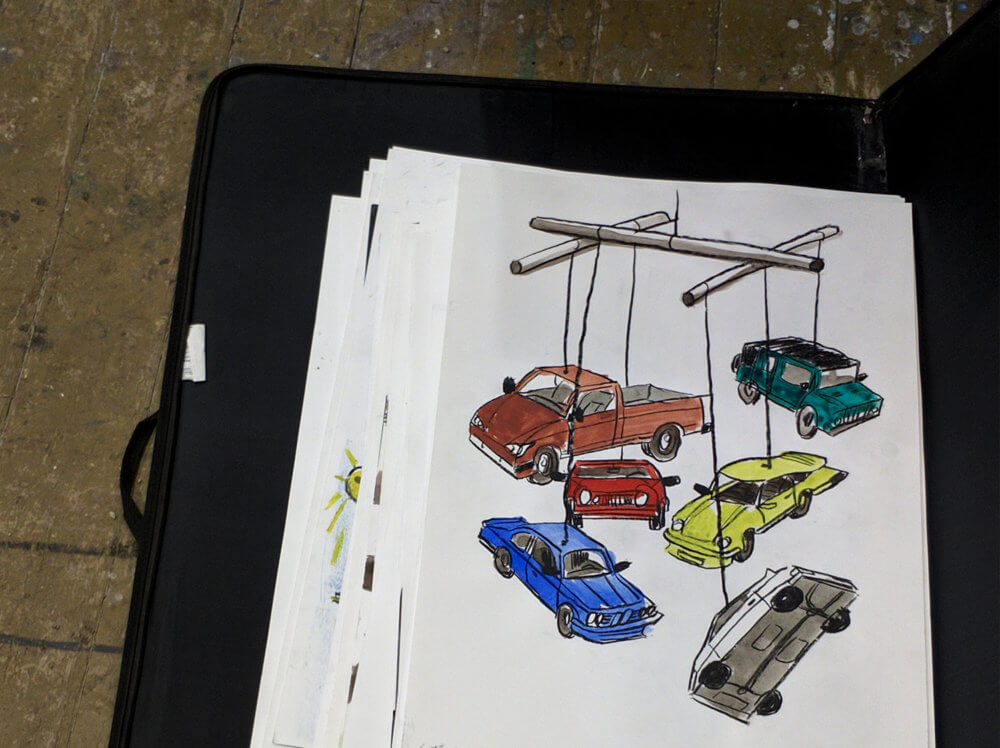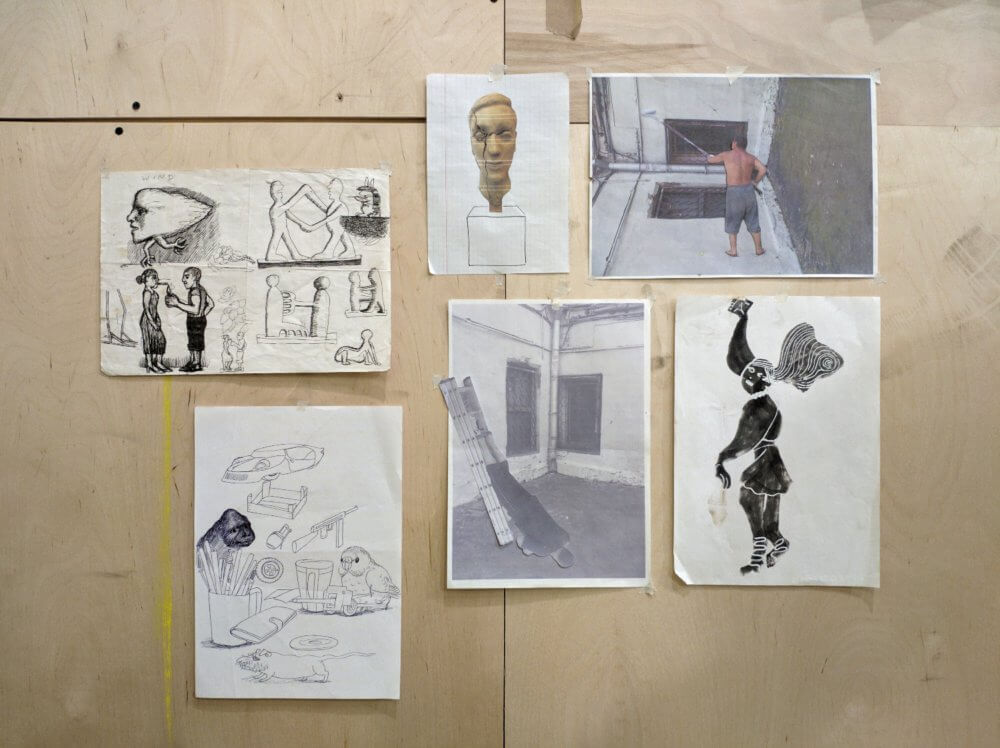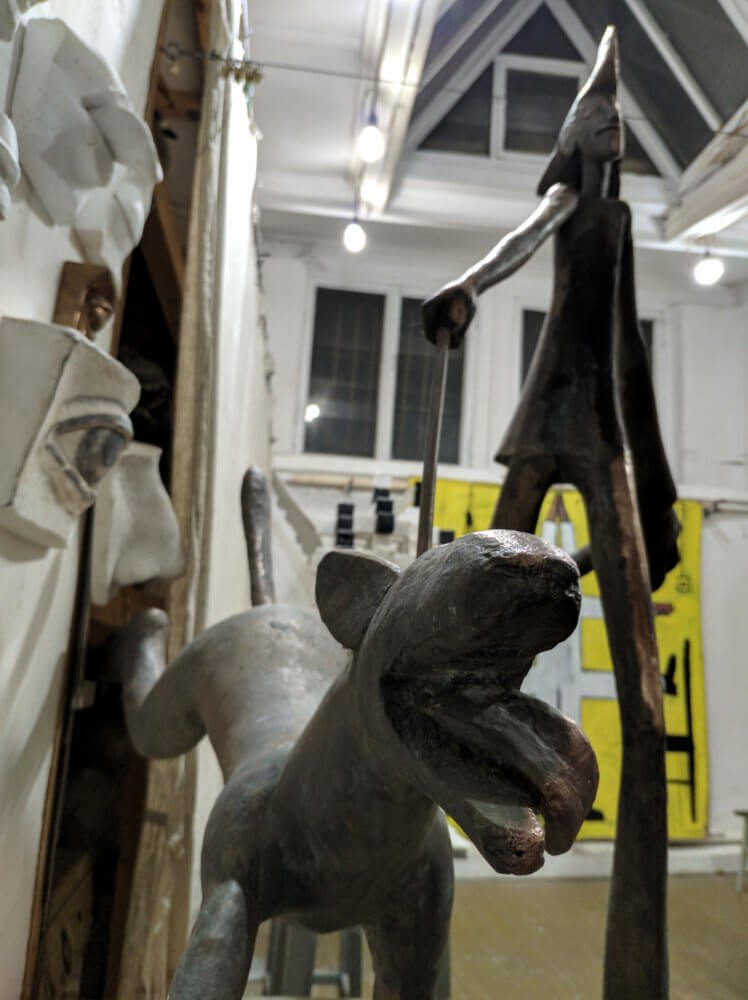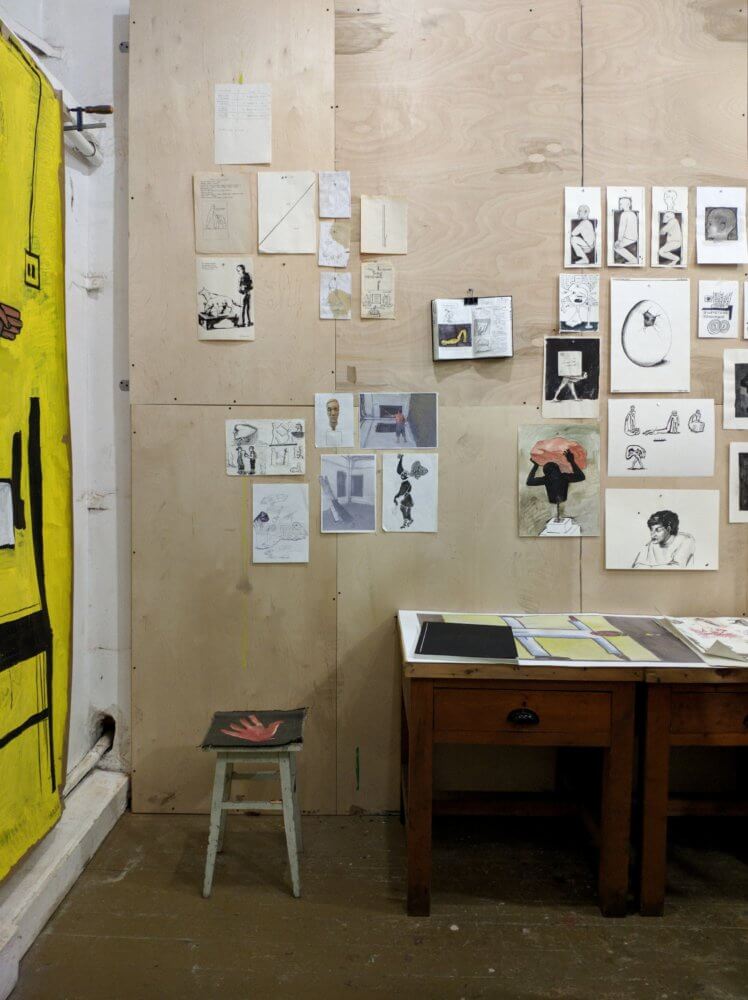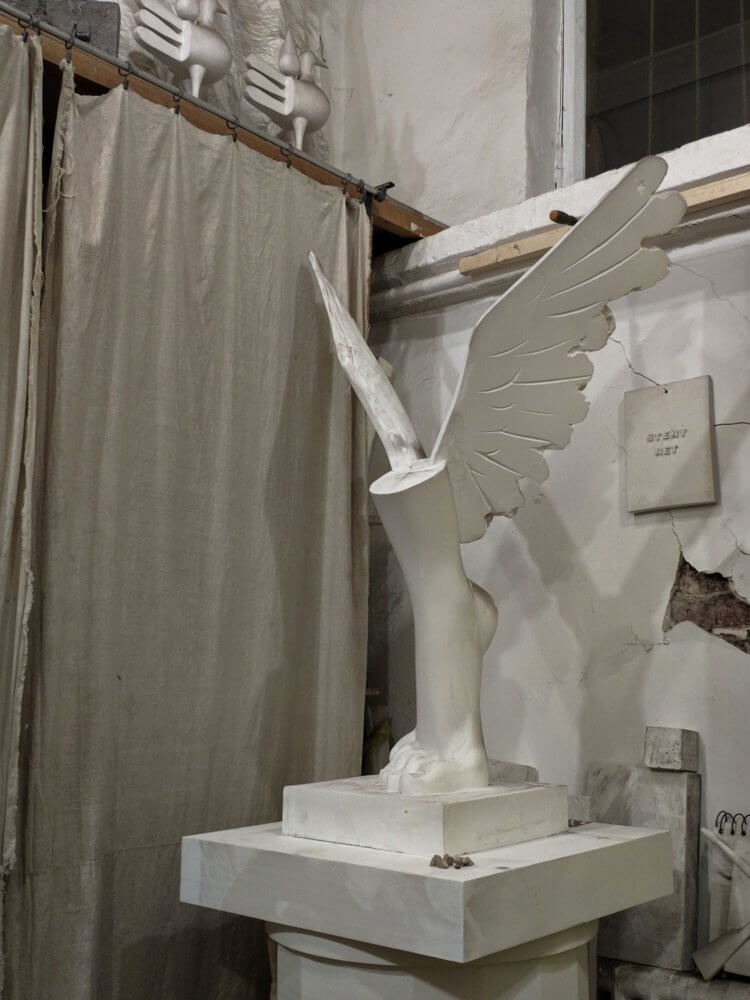Appendix. Sasha Povzner’s Studio
2020
part of Art-Space-Hopping event, Armyansky 13, Moscow
curated by Darya Urusova
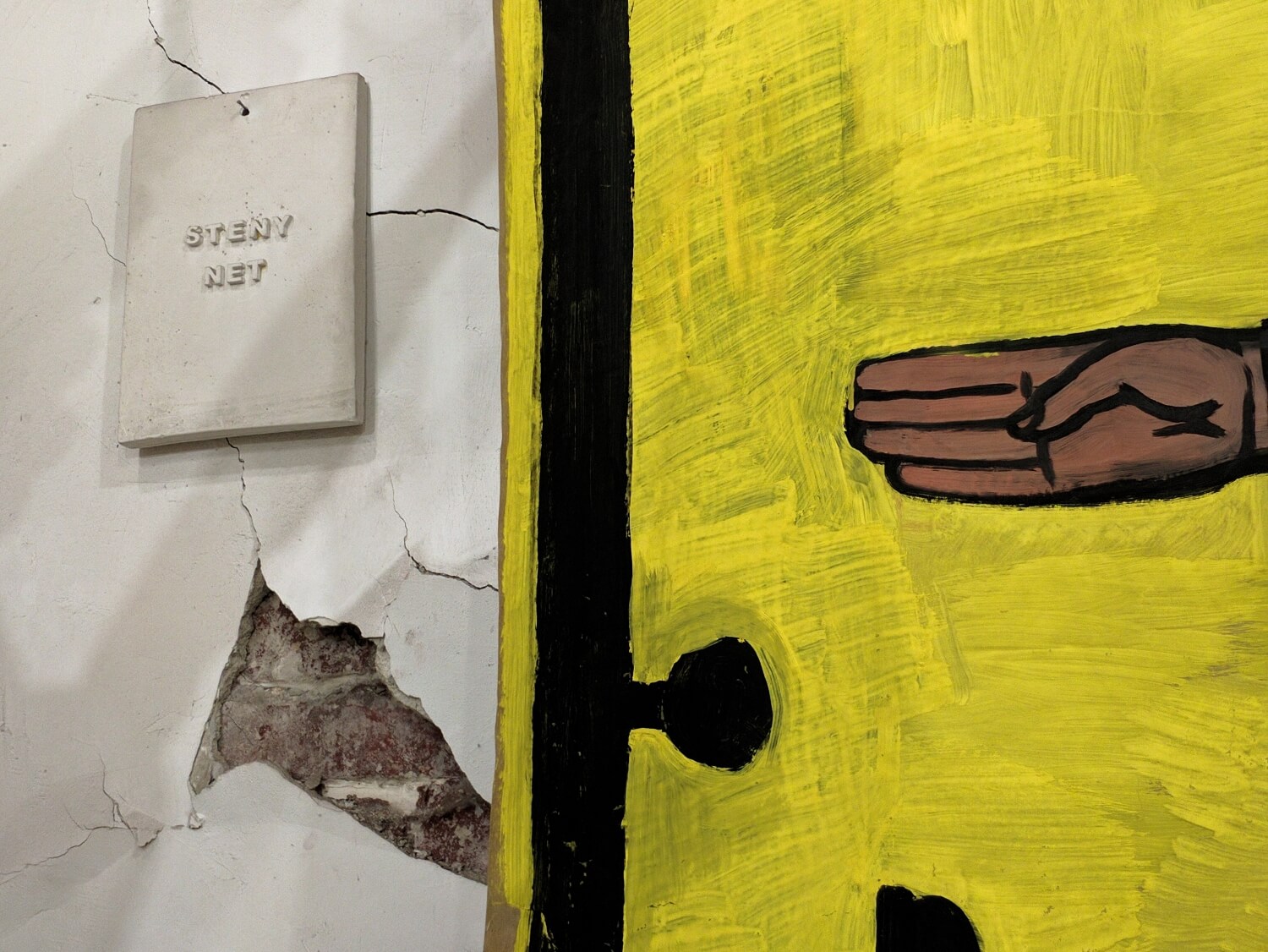
Time, place and personality are the three main components of the exhibition “Appendix. Sasha Povzner’s Studio”. The interconnection of these key elements is so strong that their complete separation from each other seems impossible: thus, time defines place, personality prevails over time, and place—over personality. And vice versa. This is similar in its own way to the ouroboros, but there is another, much more personal image that illustrates this invisible dependence: the “Vitruvian boy,” striving with his hands and feet to the limits of the cramped yellow room.
The year 2020 was marked by many upheavals. One of them was isolation, entailing a sense of pressure and unfreedom. December 2020 was the month when “the screws began to loosen”, quarantine measures began to weaken, and the world of culture, somewhat hesitantly and timidly, came alive again. Art-Space-Hopping, which this exhibition was part of, became one of the first projects that took place after the quarantine lull of several months, an opportunity to get out of the house, meet people and see art live—a luxury that became almost unaffordable after museums, galleries and other public places were closed.
The theme of claustrophobia, dependence, and painful relationships, primarily with oneself, is one of the leading motifs of the exhibition. Of course, quarantine is not the key to Pandora’s Box, releasing all demons for the first time, but the forced isolation, loneliness and lack of freedom have sharpened internal disputes and hardened the battles long waged in the soul. The exhibition “Appendix. Sasha Povzner’s Studio” raises these issues and shares the artist’s feelings and reflections in a very private, personal, even vulnerable way.
This vulnerability, almost intimacy, is due not only to the main theme and sincerity of the works, but also to the very location of the exhibition: the artist’s studio, as a rule, is not accessible to the viewer—it is a closed personal space where the artist works and sometimes lives. An invitation to the studio is a private and exceptional case, an attempt to build a special, trusting relationship with the viewer. It was especially important to strike a balance between creating a space that meets the requirements of the exhibition and the desire to preserve the working atmosphere, to show the studio as it is on ordinary days.
Another significant factor determining the exhibition was the history of the studio. The entire set of locations—the studio, the adjoining rooms, and the courtyard itself—has the code name “Appendix,” for its implicit but meaningful participation in culture. The word “appendix,” in addition to its well-known meaning echoing the hidden location of the studio, means text—a small appendix to a book or article. A continuation of the dialogue. And this is another reason why the word is included in the title of the exhibition.
In the 70s, the “Appendix” (the space did not have a name then) hosted non-conformist exhibitions, and since the 2000s, famous contemporary artists began to exhibit. Theatrical shows, art performances, lectures, artist talks, poetry evenings, and classical music concerts were held here. Hidden in an inconspicuous arch in the heart of Kitay-gorod, “Appendix” has been one of the secret points of the contemporary art movement for decades. However, the latest exhibition was held here several years ago. “Appendix. Sasha Povzner’s Studio” became a new milestone in the studio’s history, as it revived and continued the tradition of apartment exhibitions that had begun back in the twentieth century.
This is an important and very personal moment—the artist’s world is closely connected to the studio, where he spent most of his life. And that is why the second part of the exhibition was a mini-retrospective, which included, among other things, very early works and works that had never been shown to the general public before. One of the main objectives of the exhibition was to show a different Alexander Povzner—not the kind the viewer is used to seeing the artist in a gallery’s white cube—a creator of ironic worlds, word-catcher, friend of animals, birds and ladybugs. The exhibition, especially the “retrospective part”, is distinguished by the possibility of exceptionally close and very informal acquaintance with the artist, literally and figuratively: the personal presence of the artist, the opportunity to strike up a conversation with him at any moment; a studio with suspended work processes, where bronze dust has even survived on some surfaces—traces of sculpture polishing; sketches—the very rough, early ones, with typewritten titles and coffee marks, drawn on a napkin; a personal diary for 2020, where sketches are crowded with to-do lists and notes; old drawings—self-portraits, comic strips about friends, student drawings; sculptures—new and old, even half-destroyed, bronze and plaster…
Thus, the exhibition “Appendix. Sasha Povzner’s Studio” has become not only a story that very subtly and personally reproduces the relationship between man, time and place, but also an opportunity to participate in this story—to visit and immerse yourself in Alexander Povzner’s world.
Darya Urusova
